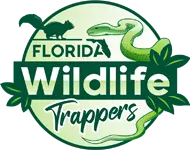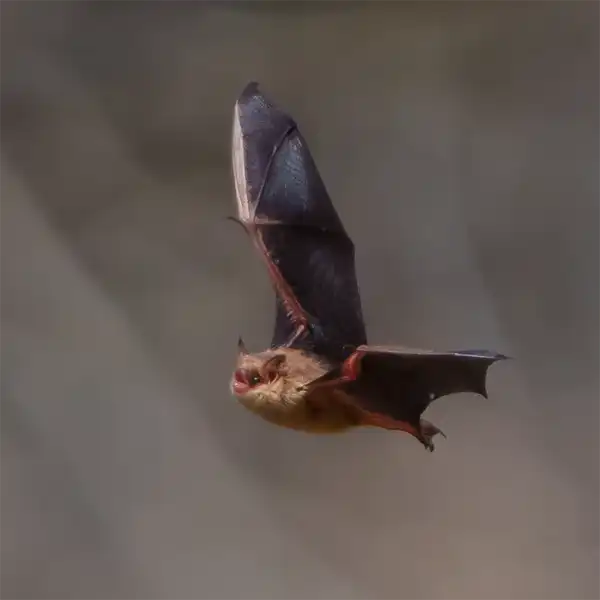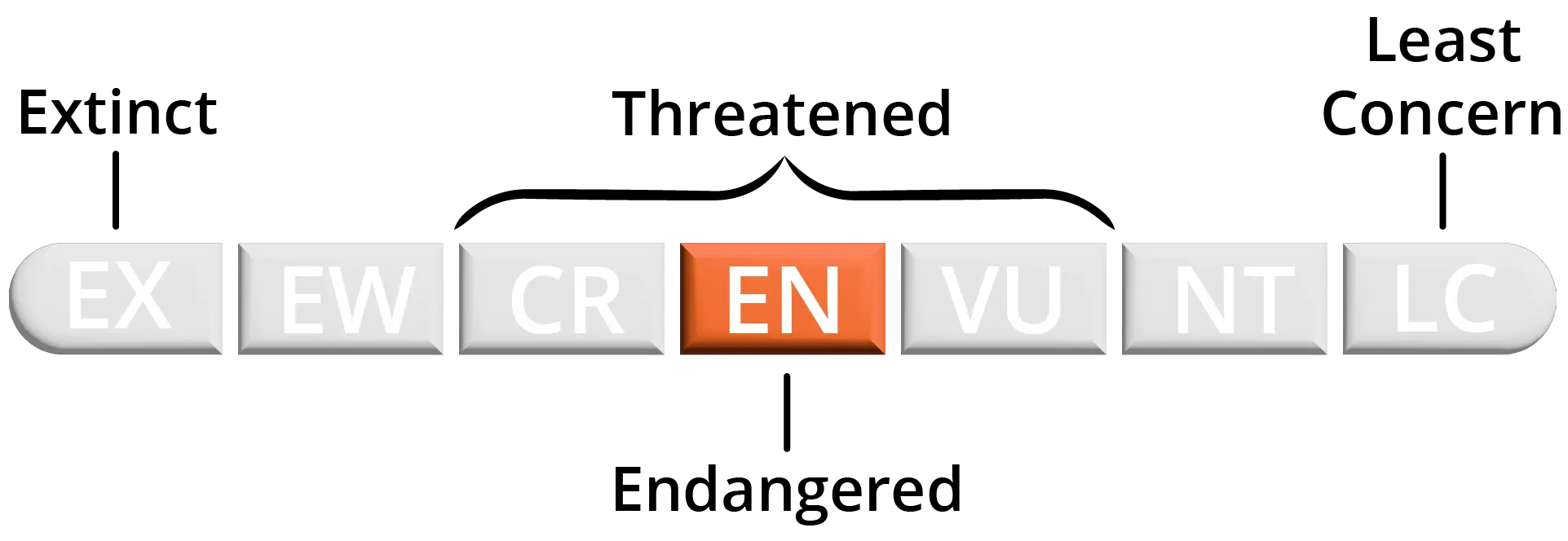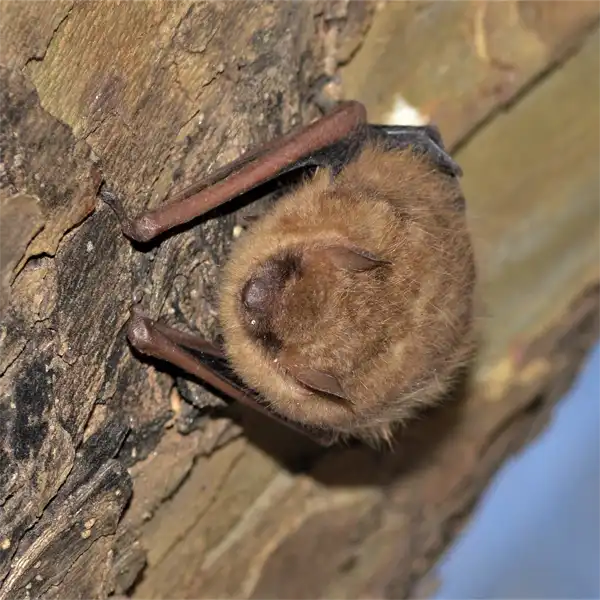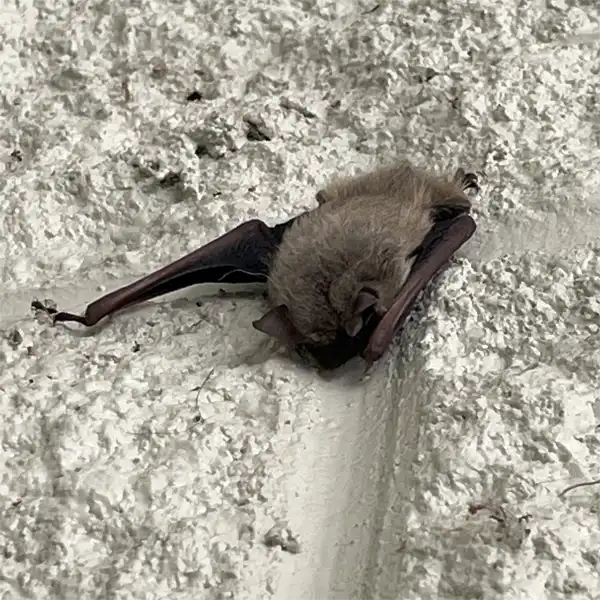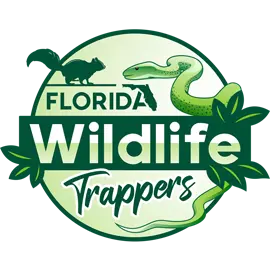Tri-colored Bat
- Scientific Name
- Perimyotis subflavus
- Also Known As
- Tricolored Bat, Eastern Pipistrelle
- Range
- All of Florida
- Diet
- Bmosquitoes, Beetles, Ants, Moths
- Life Expectancy
- 12 - 13 Year
Quick Links
The Tri-colored Bat in Central Florida
The tri-colored bat (Perimyotis subflavus) is a small vesper bat species found throughout much of eastern North America. As its name suggests, the fur of tri-colored bats displays three different colors: dark shoulders contrasting with brown back fur and olive to tan fur on the underside.
This unique looking bat plays an important role in controlling insect pests, yet also faces conservation threats from human disturbance and white-nose syndrome fungus. Read on to learn identification tips, biology, ideal habitat conditions, and prevention methods for the tri-colored bat in Central Florida.
Appearance and Identification
Tri-colored bats can be identified by their distinctive tricolored fur and small size compared to other Florida bat species
The tri-colored bat is smaller than the big brown bat (Eptesicus fuscus) and Seminole bat (Lasiurus seminolus) with less red-toned fur than the evening bat (Nycticeius humeralis). Identifying key features like the tri-colored fur and blunt tragus helps distinguish them.
Maturation Rate
Newborns open their eyes at around 6 to 8 days old. Nursing continues for 4 to 5 weeks until weaning, when the pup becomes independent. Sexual maturity is reached by their first autumn around 2 to 3 months old. Most adult body mass is achieved by 60 days after birth. The fast maturation enables a single litter each year.
Habits and Behavior
Tri-colored bats roost in clusters up to hundreds of individuals in tree cavities, Spanish moss, and under loose bark. They emerge at dusk to forage around forest edges and open wetlands. Tri-colored bats have slow, maneuverable flight less than 30 feet above ground as they pursue small insects like moths, mosquitoes, beetles and flies.
Sounds are also important for orientation and social communication. Colonies produce a constant low-intensity vocalization audible to humans. Their echolocation frequencies range from 25 to 50 kHz, often modulated. Tri-colored bats normally roost apart from other bat species.
Reproduction and Lifespan
Reproduction and Lifespan
Mating occurs in autumn near hibernacula as tri-colored bats swarm before entering winter dormancy. After delayed fertilization, adult females then migrate to summer grounds in April and May. Just one young per year is born any time from late May through mid July.
Tri-colored bats have a longer gestation than other small Myotis bats, averaging 60 days. The single pup remains flightless for 18 to 21 days. Maximum lifespan in wild tri-colored bats is estimated around 12 to 13 years based on banding studies.
Ideal Habitat and Range
The warm, humid climate of Central Florida provides favorable habitat for tri-colored bats. They thrive best in regions with mild winters above freezing and adequate summer rainfall. Average annual precipitation ranges from 40 inches inland to over 60 inches along the Atlantic coast.
Forested areas near freshwater wetlands offer suitable summer roost sites and insect-rich foraging habitat. Tri-colored bats switch roosts frequently, needing cavities in older trees. Spanish moss drape provides hiding spots. Caves or abandon mines serve as winter hibernacula sites. Urbanization that removes mature trees and fills in wetlands reduces habitat quality and foraging areas.
Diet and Feeding
Tri-colored bats emerge at dusk to hunt small flying insects like mosquitoes, moths, beetles, flies, midges and mayflies. They use echolocation to detect faint sounds reflecting off wings to pinpoint prey location. A diet dominated by moths makes up over 50% of their annual prey items.
Each tri-colored bat consumes up to two-thirds of their body mass in insects nightly. Nursing females have especially high energy demands. Varied wetland and forest ecosystems supply abundant insect diversity.
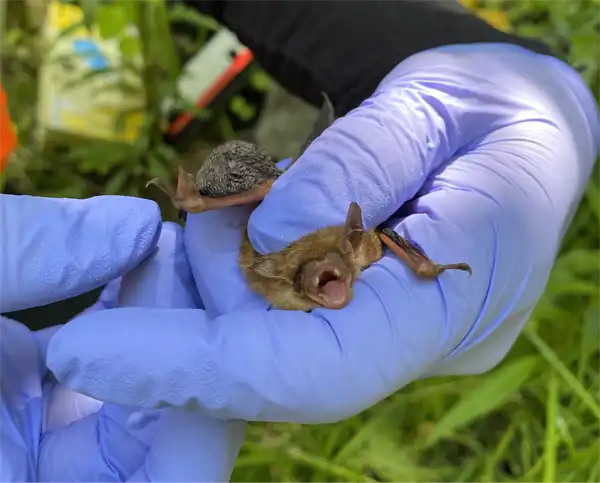
Photo 280798838 © adbunger, CC BY-NC

Common Health Risks
Overall, tri-colored bats pose low direct health risks to humans. They only rarely occupy buildings, avoiding direct contact. Histoplasmosis fungus growing in accumulated guano is the main concern. Spores can cause respiratory illness if inhaled where large colonies exist. Rabies transmission is also possible from infected bats.
A greater population threat to tri-colored bats is white-nose syndrome, a fungal disease causing up to 90% mortality. The fungus Pseudogymnoascus destructans grows on exposed skin during hibernation, increasing arousal frequency and using up fat reserves. It remains unclear how bats contract the fungus and spread continues across eastern North America, including Florida.
Preventing Tri-colored Bat Colonies
The best approach is protecting natural bat habitat like mature trees and wetlands. Ensure adequate old snags and vegetation buffers around wetlands. Avoid disturbing known maternity or hibernation sites. Bat houses can provide alternative roosts if colonies need to be excluded from buildings.
Seal any openings larger than 1/2 inch to exclude bats from structures. Use plastic sheeting, expanding foam, steel wool, or mesh. Only conduct exclusions in winter when young are self-sufficient. Never disturb hibernating bats which fatally disrupts physiology. Seek professional assistance for humane bat control methods if needed.
Tri-colored Bats in Central Florida – Conclusion
In summary, the tiny tri-colored bat plays an outsized role in insect control across Florida’s varied ecosystems. Their unique tricolored fur makes identification straightforward. Tri-colored bats thrive in Central Florida’s mild climate. But habitat loss and white-nose syndrome now threaten populations. Protecting roost trees and wetland foraging areas will be key to conserving Central Florida’s tri-colored bats into the future. Excluding them from buildings where necessary should only be done humanely and under guidance to support their ecological benefits.
